By Sarah Lozanova, Solar Marketing Writer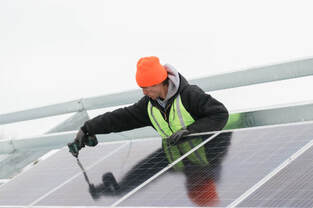 Residential solar energy companies play a pivotal role in our transition to a more sustainable future. However, navigating the complex and competitive landscape of the solar energy industry can be challenging. Marketing solar systems to homeowners can be challenging, especially when they have misconceptions about solar energy. To succeed, PV companies must avoid common marketing pitfalls that can hinder sales growth and profitability. Read on to learn about common solar marketing mistakes that can hurt your bottom line. 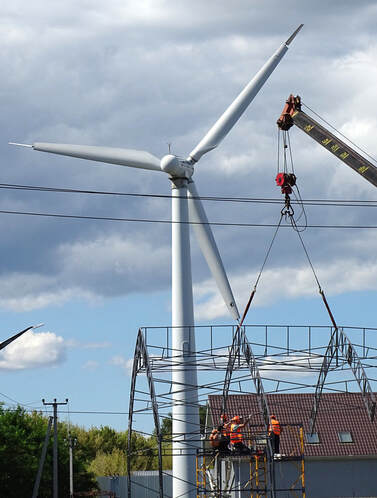 As extreme weather becomes more widespread, including wildfires, floods, heat waves, and droughts, concern about climate change is increasing across the globe. As a result, many governments, companies, organizations, and individuals are working to reduce and offset their greenhouse gas emissions to mitigate the climate crisis. Nearly 40% of Fortune 500 companies now have net-zero carbon emissions targets, but the details, such as the timelines, vary widely. For example, Apple pledges to be carbon-neutral for its supply chain and products by 2030, while Amazon and General Motors have 2040 targets. There are many steps that individuals, corporations, and nations can take to reduce their carbon emissions, such as the use of electric or plugin-hybrid electric vehicles and renewable energy. In addition, the Climate Bill provides tax credits and other incentives to use clean energy. But many people need clarification on the terminology regarding carbon neutrality, greenhouse gas emissions, and carbon capture, and it is a helpful topic for clean energy professionals to understand. As clients seek ways to reduce fossil fuel consumption, there is an increased demand for EV charging infrastructure and solar power systems. Understanding the various terms related to being carbon neutral and the top strategies for achieving this can help EV and renewable energy professionals distinguish themselves as clean energy experts.  In the ever-evolving solar energy industry, effective marketing plays a pivotal role in attracting customers and establishing a brand's credibility. Harnessing the sun's renewable power is not only an eco-conscious choice but also a smart economic decision. However, conveying the benefits and complexities of solar technology to potential clients requires a deft touch. That's where an experienced solar energy writer comes into play. Effective solar marketing campaigns rely on engaging stakeholders within the target market. Yet, many marketing firms and PR agencies lack the renewable energy industry knowledge to realize this. Let's examine five compelling reasons why hiring an experienced solar energy writer for marketing materials is crucial for numerous businesses in the solar energy industry. By Sarah Lozanova, Solar Energy Writer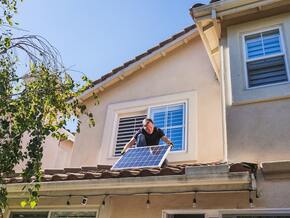 There are enough solar energy systems in the United States to power nearly 22 million homes. Now that solar electricity is relatively mainstream, many solar homes are on the real estate market. So, how do solar panels and the often-lower energy costs that come with them impact a home’s worth? Numerous studies show that solar panel systems increase property values. Let’s explore what makes solar panels so attractive to home buyers and review some data that puts a number on the impact of a solar energy system. Does Solar Increase Home Value?Multiple factors can impact home prices. Location is usually high on home buyers’ list because it affects commute time, school choices, recreational activities and many other aspects of daily life.
The size and condition of the home are also important. Potential buyers, real estate agents and home inspectors will take a close look at everything from kitchens to closet spaces to HVAC units. They’ll also keep an eye out for upgrades that make the home a better value and might improve quality of life.  Solar energy has emerged as a crucial player in transitioning toward a greener future and affordable electricity rates. However, many home and business owners don’t understand the benefits of solar power and how affordable it has become. As a solar energy installer, reaching potential customers with your marketing messages is essential to establish your brand and drive business growth. Read on to learn about solar marketing strategies to connect with your audience and position your solar energy installation services effectively. Define Your Target AudienceFirst, determine if you will have a niche within the solar energy installation market, such as residential, light commercial, or off-grid PV projects. Identify the demographics, behaviors, and preferences of potential customers interested in this solar energy niche. Consider age, income level, environmental concerns, and location. This information will help tailor your solar marketing efforts to resonate with your target audience and understand how to connect with them.
By Sarah Lozanova, Sustainability Writer Every year, about 20 billion pairs of footwear are produced across the globe. Unfortunately, the fashion industry is known for pollution, an immense water and carbon footprint, and poor working conditions. However, a handful of footwear companies are creating fundamentally more sustainable products and inspiring corporate giving programs. These innovative brands are taking actions such as opting for ocean freight over air freight to reduce greenhouse gas emissions, partnering with BLOOM for algae-based EVA foot beds, and using recycled water bottles in their footwear materials. They are creating fashionable products using bio-based or recycled materials, reducing packaging waste, and paying a living wage to their workers. Let’s explore some of these footwear brands that are leaders in sustainable footwear. By Sarah Lozanova, Solar Energy Copywriter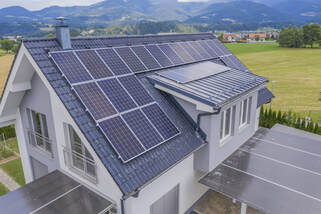 The home solar market is booming right now! Electricity rates are rising across the United States, and the federal solar tax credits recently increased to 30% through 2032. As a result, more solar companies are springing up all the time. Although some are reputable companies with solar energy expertise, others aren’t. If you are thinking about going solar, beware of scams and deals that seem too good to be true. Read the fine print before signing a contract and understand your financial obligations before moving forward. Red Flags Of A Solar Panel ScamHow do homeowners identify a good deal from a solar energy scam? We’ll help you spot the red flags so you can identify quality opportunities.
Red Flag #1: Scam Offers For Free Solar Panels Offers for free solar panels or solar panel systems paid for by the government are likely to be scams or misleading. In many cases, these offers require homeowners to lease or sign a power purchase agreement (PPA) rather than own the solar equipment. By Sarah Lozanova, Clean Energy WriterDespite setbacks from the pandemic, renewable energy deployment is increasing. The Inflation Reduction Act extends renewable energy tax credits and helps remove barriers for low-income households to use clean energy. Although supply chain shortages have created hurdles across the energy industry, 2023 has the potential to be a promising year for the transition to clean energy. Let’s examine the forces at play for renewables in 2023. High Fossil Fuel Costs Make Renewable Energy More Cost-EffectiveThe price of oil, natural gas, and coal has been rising, and quite erratic, partly due to the Russian invasion of Ukraine. A natural gas shortage has temporarily spiked interest in coal, causing prices to soar last March and then rise and dip repeatedly since. Although some markets are using more coal during natural gas shortages, a return to coal power is counterproductive for mitigating the climate crisis.
By Sarah Lozanova, Clean Energy Writer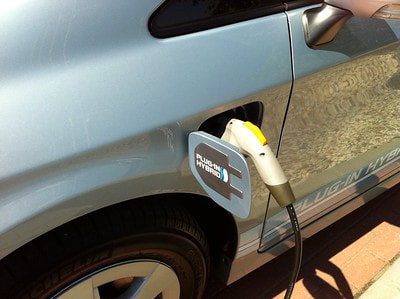 By 2030, it’s projected that there will be more than 26 million electric vehicles (EVs) in the U.S, according to the Edison Electric Institute (EEI). However, many potential EV drivers have range anxiety and are concerned about being limited by the range of an electric vehicle. EV range continues to improve across the board as technology advances, but range anxiety and the lack of robust charging infrastructure to date still concerns many drivers. For this reason, plug-in hybrid electric vehicles (PHEVs) are a popular alternative because they offer some of the same advantages as electric vehicles without the same range issues. Because this is a major automotive industry trend, it is essential for solar and EV infrastructure installers to know what is going on in the EV market to help educate potential customers. By Sarah Lozanova, Solar Energy Writer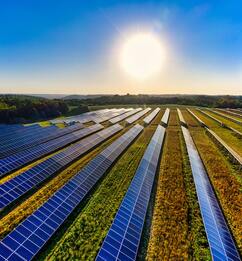 Power outages due to severe weather are on the rise. An aging power grid and an increase in extreme weather events are causing more frequent blackouts. Innovative technologies and approaches can be useful in promoting a reliable power supply. In particular, microgrids can help mitigate the impacts of extreme weather on households and businesses by ensuring a more reliable energy supply. A microgrid is a local electrical grid with clear boundaries that can act as a single, controllable entity. It can function in “grid-connected” or “island” mode, depending on the circumstances and setup. Stand-alone microgrids or isolated microgrids are not connected to a larger power grid. These microgrids are most common in remote locations, such as islands or mountainous regions, or areas prone to natural disasters. Microgrids rely on fuel cells, solar panels, wind turbines, battery storage, natural gas or diesel generators, and other alternative energy technologies to produce or supply electricity. Let’s explore solar microgrids and how they work to understand when they are a good option for your clients. By Sarah Lozanova, Energy Copywriter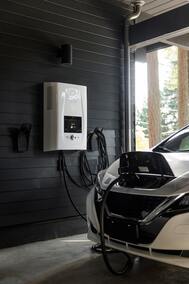 The sale of battery-powered vehicles has surged across the United States, China, and Europe, while sales of conventional vehicles have stagnated. In 2021, electric car sales represented nearly 9% of global car sales, more than tripling their market share over two years. The Inflation Reduction Act (IRA) will invest $370 billion to cut carbon emissions and promote clean energy use, and this law has a major impact on EV tax credits. That means eligible EV shoppers may qualify for up to $7,500 in federal tax credits plus potential state incentives. However, the tax credits are a bit complicated and change over time. So, let’s demystify how electric vehicle tax credits work, so you can take advantage of them and make an informed decision when you purchase an EV. The following is not tax advice; please consult with a tax expert to learn if you can benefit from an electric vehicle tax credit. By Sarah Lozanova, Solar Energy Writer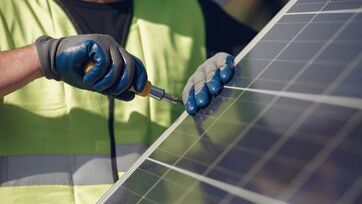 An estimated 6% of the residential solar systems installed in 2020 have battery storage, but this number varies widely by location. In Hawaii, where there is a lack of net metering laws, approximately 80% of home solar power systems have energy storage. Solar batteries are also more prevalent in California than in other states because of the Self-Generation Incentive Program and public safety power shutoffs designed to prevent wildfires. The prices of advanced lithium-ion solar storage batteries have fallen in recent years, making them more affordable to homeowners. In addition, some states or utilities offer battery rebates or tax incentives, including California, Hawaii, Illinois, Maryland, Massachusetts, and Oregon. But some may require the homeowner to install the solar system and batteries simultaneously. As storage systems increase in popularity, many homeowners want to add batteries to their existing solar panel systems. Solar batteries are especially appealing in areas with an unstable electric grid, such as areas regularly impacted by severe weather. Also, some homeowners can reduce their electric bills more with a battery due to the utility rate structure in some areas. Let’s explore this topic so you can better serve your existing customers. By Sarah Lozanova, Solar Copywriter The solar power industry has grown exponentially in recent years, and there is unprecedented demand for clean energy across the globe. The solar industry generated more than $33 billion in private investment in the U.S. in 2021, but the industry is also becoming more competitive and facing hurdles. Supply chain constraints have led to increased equipment costs, but there are opportunities to reduce soft costs, like customer acquisition expenses. Thus, your digital marketing efforts are critical for earning a strong reputation, showing your achievements, and setting yourself apart from the competition. One of the best ways to realize these benefits is by using a skilled renewable energy writer with extensive solar industry knowledge to create rich content. Solar Writing Expertise Awkwardly written websites, company bios, and marketing materials reflect poorly on organizations. Thus, a well-written website, marketing handouts, proposals, blog posts, social media content, and press releases are vital for earning trust and setting your company apart. Hiring a solar copywriter brings strong writing skills to your marketing team, so they can focus on what they do best. Renewable Energy Industry Knowledge Many solar companies are reluctant to hire a professional writer because most lack extensive solar energy industry experience. Although their writing may be high-quality, it lacks insight into your unique target market, changing market conditions, or government policies. By Sarah Lozanova, Solar Energy Writer The nation’s aging electrical grid is struggling in the face of extreme weather. Water shortages from drought reduce hydroelectric power output from dams, and heat waves boost electricity consumption due to increased air conditioner use. Severe storms can cause grid failures due to downed wires, and some utility companies resort to power safety shutoffs to prevent wildfires when conditions are ripe. Unfortunately, blackouts are a growing reality for many Americans. Yet, our homes are designed to have electricity, and living without it, even for a few hours, can be challenging. As a result, our basements can flood, mechanical systems shut off and home offices become unproductive. Many households are looking for alternatives to the power grid to keep the lights on, and using solar energy can be an attractive option. However, how you might use solar panels during a power outage depends on both your solar energy equipment and how it’s connected to the grid. Types Of Solar Homes And How They Handle OutagesYour solar panel system design will determine if and how you can have electricity during brownouts and blackouts. This varies based on whether you have battery energy storage.
By Sarah Lozanova, Clean Energy Writer Invented in 1976, lithium-ion batteries are one of the most popular battery types currently in use. They are widely used in electronics, electric vehicle (EV) batteries, and power grid storage systems across the globe. Lithium batteries have many appealing qualities, including their high energy density, ability to charge quickly, light weight, and long lifespan. When hybrid electric vehicles and EVs first hit the market, there was a lot of concern about the lifespan of their lithium-ion batteries. Would EV drivers need to replace this expensive component in just a few years? Considering EV batteries can cost $10,000 or more to replace, it is a valid concern. How Long Do EV Batteries Last? Whereas the lead acid car batteries generally found in traditional cars commonly last three to five years, EV batteries have a much longer lifespan. They typically last 10 to 20 years, and most EVs have long battery warranties. Many automakers offer an 8- to 10-year or 100,000-mile warranty for EV batteries. Yet, EV batteries don’t usually just give out one day and stop holding a charge. Rather, they gradually lose their ability to store energy, which slowly reduces the driving range of the vehicle, and most EVs lose about a 1% to 2% range each year due to the battery. That means your car will slowly drive fewer miles on each charge. |
